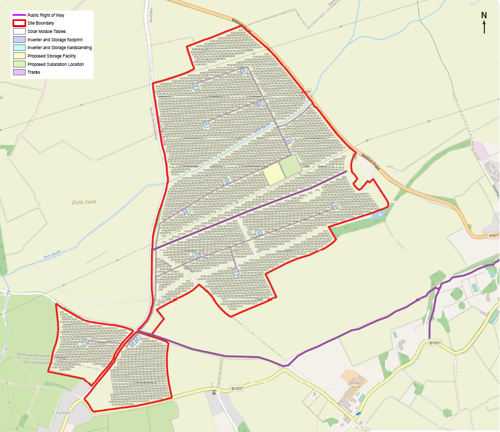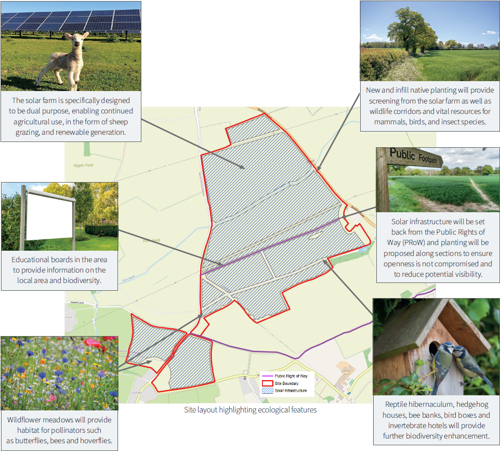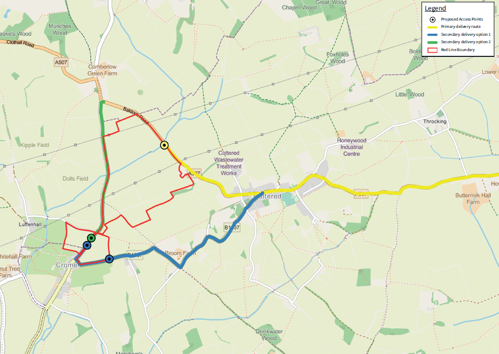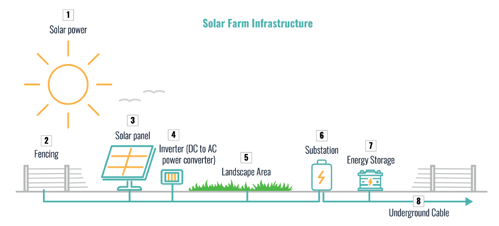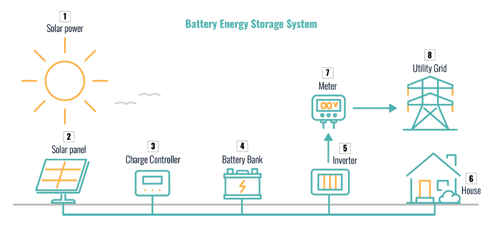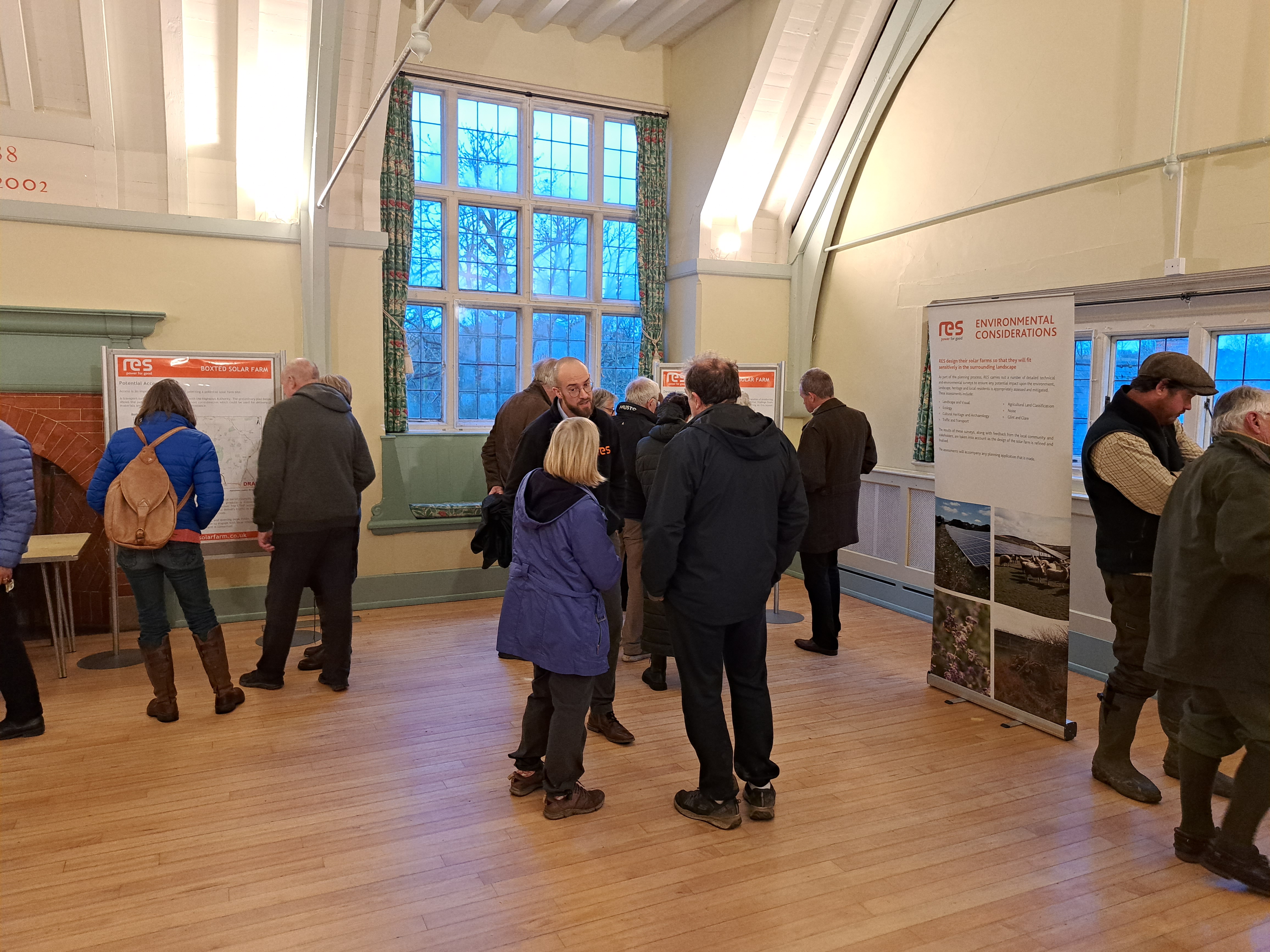
Pre-application Public Consultation
Our public consultation ran from 14 November 2023 to 28 November 2023 with a public exhibition held on 14 November at Girlguiding Hertfordshire County Centre, Cottered, SG9 9QP. Thank you to everyone who came along to the exhibition on the day.You can continue to view our consultation materials below. Please contact us if you have any questions.
Please note that comments submitted to RES at this time were not representations to the determining authority (East Hertfordshire District Council). There is an opportunity to submit representations to the determining authority now an application has been made.
Why solar?
There is now widespread recognition that the UK, and the rest of the world, is in a climate emergency. To help address climate change, the UK has committed to reaching net zero by 2050, requiring us to quadruple our low-carbon electricity generation.
Solar energy enables more electricity to be generated domestically without reliance on imports and is not subject to sudden price fluctuations or the uncertainty of global markets. It can therefore play an important role in improving the security and diversification of the UK’s energy supply.
Government forecasting places solar as the cheapest source of new electricity generation for the coming years. This means investment in solar projects like Beane Solar Farm is not just good for the environment but also for consumers.
Design layout and infrastructure
The plan to the right shows the preliminary layout for Beane Solar Farm which will be capable of producing up to 49.9MW of clean, renewable electricity. The preliminary layout is based on initial findings from environmental and technical surveys which are ongoing.
The final site layout will be informed by the results of site surveys and assessments and feedback from stakeholders and the local community.
In addition to solar panels, site infrastructure is expected to include the following:
- A network of on-site tracks
- A substation with security fencing
- Inverters on hardstanding
- Energy storage facilities
- Deer fencing around the perimeter of the solar farm
Landscape and ecology
Beane Solar Farm has significant potential to enhance biodiversity by hosting a range of habitats including wildflower meadows, hedgerows and nectar-rich areas for pollinators.
The plan below shows a preliminary Landscape and Ecological Management Plan (LEMP) which illustrates our immediate and long-term commitments for the site.
As the design progresses, the LEMP will be developed further with site-specific details on measures to enhance existing habitats, protect species and provide landscaping specifications for new vegetation in accordance with relevant standard.
Access and construction
Potential access routes
We have reviewed the potential access routes to determine how to access the site most efficiently with minimal disruption to neighbours. To access the main site, we aim to create a new road opening onto the A507. We are still considering different options to access the Southwestern field.
The preliminary plan to the right shows our potential delivery routes and access points which could be used during construction and operation.
We are engaging with Hertfordshire County Council’s Highway Officer to determine the best access routes to the site, but all comments and feedback from the public would be appreciated.
Construction programme
We hope to submit a planning application to East Hertfordshire District Council in early 2024.
During the construction period, we anticipate that site traffic will peak around months 3 and 4. The traffics movements will be limited to avoid morning and evening peak times, where possible.
How does solar work?
Solar PV panels are typically made from silicon, which is a great semi-conductor, installed in a metal panel frame with a glass casing.
The sun gives off light, even on cloudy days, and when these light particles, or photons, hit the thin layer of silicon on the top of a solar panel, they knock electrons off the silicon atoms which creates a direct current (DC) of electricity. This is captured by the wiring in the solar panels.
This DC electricity is then converted to alternating current (AC) by an inverter which is then funnelled into the grid network. AC is the type of electrical current used when you plug appliances into normal wall sockets.
Bifacial modules have two sides of solar cells, enabling additional energy generation from the diffuse light reflected off the grass, on the rear-side of the panels.
In most cases solar panels are recyclable and there are well established industrial processes to do this. There are organisations around the UK and Europe specialising in solar recycling, such as PV Cycle and the European Recycling Platform. They are working with solar developers to minimise electrical waste and recycle old panels in line with the Waste from Electrical and Electronic Equipment (WEEE) regulations1.
Solar farms with battery storage
As the plans are still at an early stage, the exact layout of panels and infrastructure across the site is still being developed. However, the following elements are anticipated to be included in the project:
- Solar PV modules and the associated mounting structures
- On-site supporting equipment including inverters, transformers, and switchgears
- Battery Energy Storage System (BESS)
- Wildflower planting
- Underground cabling within the areas of the solar PV modules and connecting solar PV module areas to the on-site substation
- Supporting infrastructure including access tracks, security measures, gates, lighting
- Improvements to hedgerows throughout the site
Environmental considerations
As part of the planning process, RES carries out a number of detailed technical and environmental surveys to ensure any potential impact upon the environment, landscape, heritage and local residents is appropriately assessed and mitigated.
These assessments include:
- Landscape and visual
- Ecology and ornithology
- Cultural heritage and archaeology
- Traffic and transport
- Agricultural land classification
- Noise
- Glint and glare
- Flood risk and drainage

